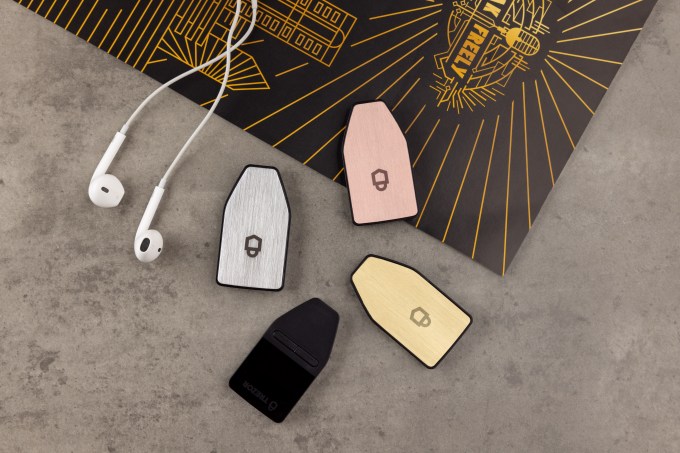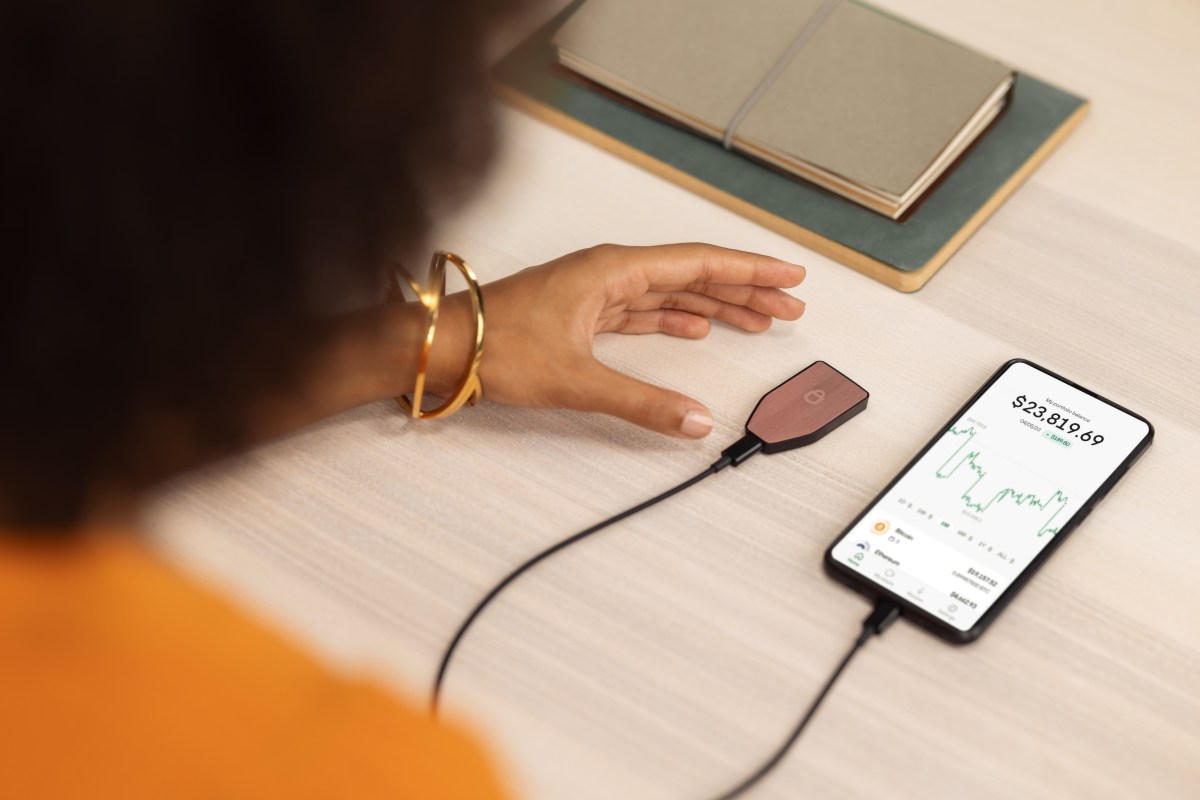Trezor launches two new devices to help onboard crypto newbies
Trezor, a hardware crypto wallet company, debuted two new products this week at the Bitcoin Amsterdam conference — and we got to take a first look at them.
Trezor Safe 3, a hardware crypto wallet, and Trezor Keep Metal, a “mistake-proof” backup solution for wallet passwords, launched in celebration of the company’s 10-year anniversary.
The new crypto wallet is designed specifically for new digital asset entrants with a focus on “maximum safety and ease of use,” Matěj Žák, CEO of Trezor, said to TechCrunch.
Hardware crypto wallets are one of — if not the — safest ways to store your digital assets, because they’re typically not connected to the internet, inhibiting the risk of an online attack. Also it’s arguably better sometimes to keep cryptocurrencies on a wallet instead of a centralized exchange, where they can be frozen and withheld like Celsius did in June 2022, because it gives you total control over the tokens.
But that control also comes with a lot of responsibility. While the device holds your coins securely, you only get told the passcode (seed phrase) once upon setting up a wallet. If you forget it, you might lose access forever.
In the past year to 18 months, a lot of crypto wallet providers have improved their user interfaces and products to create a user-friendly experience, given how difficult the onboarding process into the space has historically been.
In December 2022, Ledger, a security-focused firm that sells crypto hardware wallets, partnered with the designer behind the iPod, Tony Fadell, in hopes of creating an easier, more accessible way for users to secure their crypto assets.
“Our team has spent literally thousands of hours developing our user experience,” Žák said. “We have carried out extensive research and focus groups with crypto novice audiences to underpin development of our new products.”
Trezor Safe 3 aims to make crypto wallets easier to use
Trezor Safe 3 retails for $79 and is available in four colors — gold, rose gold, silver and black — with a 0.96” monochromatic OLED screen and two-button pad.
The wallet supports major cryptocurrencies like bitcoin and Ethereum, as well as over 7,000 other tokens. It can be integrated with Trezor’s desktop application, which helps users manage their cryptocurrencies on its platform. The product also has a tamper-resistant hardware component to provide additional protection in real life and can operate in conditions ranging from negative 4°F to 140°F, according to Trezor’s website.

Image Credits: Trezor (opens in a new window)
The Trezor Safe 3 weighs only half an ounce and comes in a box about the size of an iPhone, which includes the wallet itself, a USB-C charging cable, some branded stickers and a pamphlet describing how to set it up, alongside two paper cards so you can write down your 12-word recovery phrase, also known as a seed phrase, that gives you access to your device’s assets.
It’s important to remember that for any crypto wallet you have you write down your recovery phrase on a piece of paper — not online — and store it in a safe place so no one else has access to it. Recovery seeds are randomly generated words created by the wallet that allows you to recover and access your funds; think of it like a password that you can’t forget because you can’t reset it.
In addition to commemorating its 10-year anniversary, the Trezor Safe 3 also launched to celebrate that it released a limited edition bitcoin-focused hardware wallet that solely runs on Bitcoin firmware and is only available in “Bitcoin orange” color. There were only 2,013 devices being sold at the same price, and according to the company’s X account, it sold out within a day.
Inside the orange-themed packaging there’s a quote from Satoshi Nakamoto, the pseudonymous creator of Bitcoin, that said, “If you don’t believe me or don’t get it, I don’t have time to try to convince you, sorry.”
The setup process is pretty straightforward. First, users have to download and install Trezor Suite, which gives you access to your device’s contents from a better interface than the tiny little screen the product has. From there they connect their Trezor with the USB cable and set it up online. It’ll give you the option to create a new wallet or recover one from a backup recovery seed. I went the create a new wallet route.
Trezor gives you the option to do a standard seed backup or an ”Advanced Shamir Backup,” which allows users to recover the wallet by combining a list of words and can be secured in different places for additional security.
After writing down the seed phrase, creating an (optional) pin, the Suite allows you to select a handful of coins to show on its platform, I picked Bitcoin and Ethereum.
From start to finish, the setup process took less than 10 minutes. The company calls itself easy to use and I’d agree with that sentiment. The ultimate test, though, would be having someone who’s unfamiliar with testing it out (time for me to take a trip home to see if my non-crypto-native mom could set one up.)
The Trezor Keep Metal keeps your seed phrases safe from fire, acid and more
The Trezor Keep Metal aims to safeguard users’ recovery seed phrases and has two price points: $99 for the standard 12-word backups and $249 for 20-word Shamir-compatible Trezor Safe 3 backups.
The Shamir product’s package is 67 ounces, or roughly four pounds, which is heavy, but the small flashlight-shaped product is 3.9 inches x 1.4 inches and weighs less than a pound. The standard product’s package is about 1.3 pounds and the actual product is 4.3 inches x 1.2 inches and also weighs less than a pound. The weight makes sense — it’s made to be damage resistant with “aerospace grade” stainless steel and a black surface treatment.

Image Credits: Trezor (opens in a new window)
The Shamir version comes with three, 20-word backup devices, and the standard version comes with one device to secure a 12-word backup phrase. Both products come with a pre-marking pen to mark letters before using the punching tool to make the recovery seed phrase permanently ingrained into the product. There’s also tamper-evident stickers you can close the product with and step-by-step instructions.
The Keep Metal aims to ensure one’s recovery seed papers are safe under any conditions with its corrosion resistant exterior and watertight seal. (I put mine underneath water and the inside did stay dry.) It also claims to protect against fire, acid, chemical corrosion, extreme temperatures and other heavy impacts — but I’m not going to be testing it against those elements, for obvious reasons.
But for roughly $99 or $250, respectively, I’m not sure it’s worth the price for the average person. If you’re someone who loses a piece of paper the second you put it down or are likely to damage it, this might be good for you. With that said, the price point is steep for what it does, but I guess if your crypto wallets are holding astronomically higher digital asset value, the product’s price could seem like a bargain in the bigger picture.
The products are available for preorder and will be shipped to the public in mid-November, the company shared in a statement.
The well-known crypto wallet saying, “Not your keys, not your coins,” has also been a prominent theme over the last year after the high-profile implosion of such centralized exchanges as FTX transpired, Žák said.
In early December, Ledger’s chief experience officer, Ian Rogers, said the company had its biggest sales day ever, which ended its biggest sales week ever, in mid-November 2022 after FTX collapsed, which signals the demand for hardware crypto wallets is rising.
And as the trial for FTX’s co-founder and former CEO Sam Bankman-Fried continues, more people might be reminded of what happened 11 months ago and consider securing their digital assets — if they haven’t already.
There has been a significant uptick in interest in self-custody of crypto assets with hardware wallets, Žák added. “The reality is that too few people are using hardware wallets today, so we see huge potential for growth from both existing crypto users and new entrants to crypto.”



